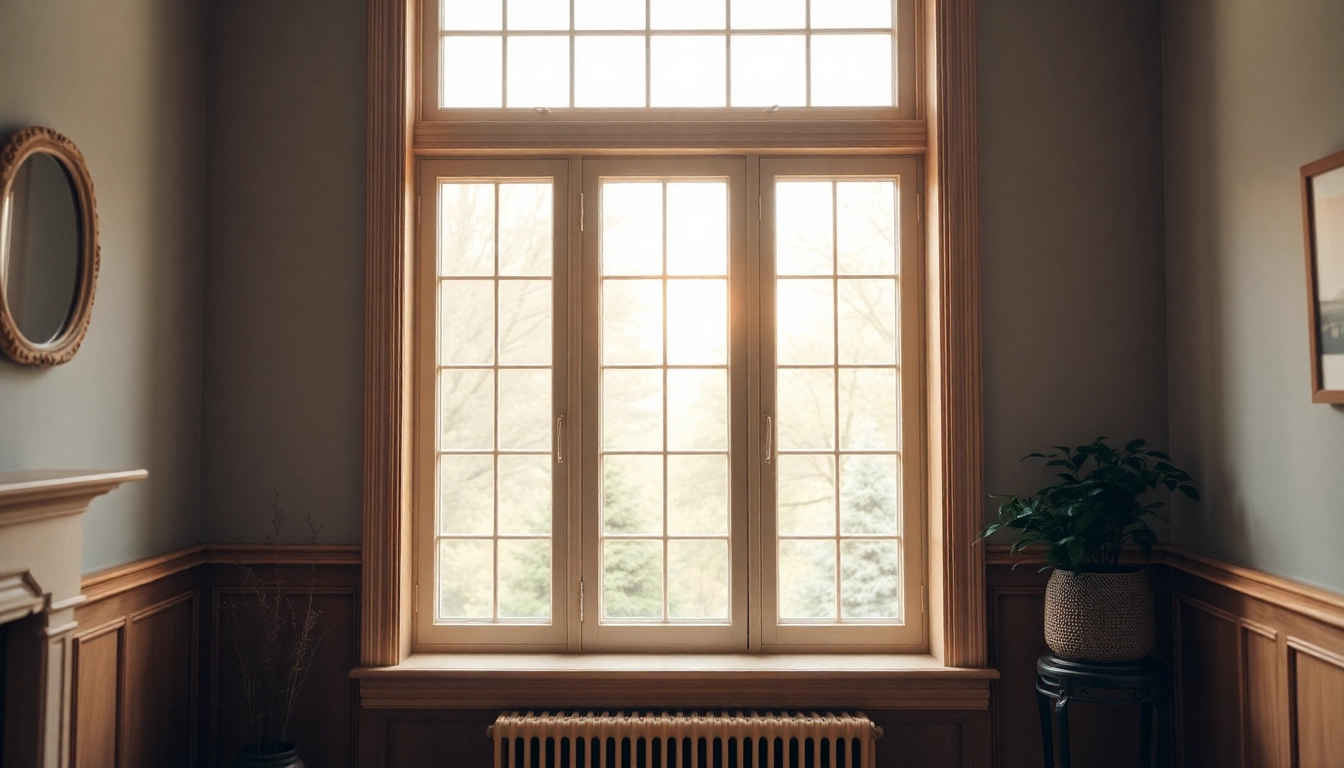Windows are essential architectural elements that offer functionality, aesthetics, and energy efficiency to your home. Among various window styles, new sash windows stand out for their timeless beauty and practicality. This comprehensive guide explores the intricacies of new sash windows, covering their types, benefits, cost considerations, and installation processes, empowering you to make informed choices when upgrading or replacing your windows.
Understanding New Sash Windows
What Are New Sash Windows?
Sash windows are a type of window that features one or more movable panels, or “sashes,” that slide vertically or horizontally within a frame. They traditionally consist of timber and are characterized by their elegant design and functionality. New sash windows incorporate modern materials and glazing technologies, blending the aesthetic charm of traditional styles with enhanced performance and energy efficiency. With the introduction of uPVC and other synthetic materials, today’s sash windows provide a variety of choices that cater to both historical renovations and contemporary architecture.
Benefits of Choosing New Sash Windows
- Enhanced Aesthetics: New sash windows offer a classic, elegant look that can significantly enhance the curb appeal of any property.
- Energy Efficiency: Modern sash windows are designed with superior insulation and double-glazing options, helping maintain comfortable indoor temperatures and reduce energy bills.
- Ease of Operation: Improved mechanisms and materials make new sash windows easier to open and close, contributing to better ventilation without the hassle of traditional windows.
- Customization Options: Homeowners can choose from various materials, colors, and finishes, allowing them to match the windows to their home’s unique style.
- Durability: Using contemporary materials like uPVC or engineered wood can lead to greater longevity and reduced maintenance needs compared to older wooden window designs.
Sash Window Styles and Materials
While the classic timber frames often embody the traditional spirit of sash windows, modern iterations have introduced various styles and materials to meet different preferences and engineering standards:
- Timber Sash Windows: Made from natural wood, they offer aesthetic warmth and are often favored for heritage properties. They can be painted or stained to match various home styles.
- uPVC Sash Windows: A popular alternative due to their durability, low maintenance, and inherent insulation properties. They are often available in several colors and finishes, mimicking traditional wood looks.
- Aluminum Sash Windows: Known for their strength and sleek appearance, they provide a modern alternative that can withstand varying weather conditions. They typically feature narrow sightlines, providing a contemporary look.
- Composite Sash Windows: This style combines materials, generally uPVC with a timber appearance, offering dimensional stability and the visual appeal of timber.
Cost Considerations for New Sash Windows
A Breakdown of Old vs. New Sash Windows Prices
The cost of sash windows can vary significantly depending on the material, style, and complexities involved in installation. Generally, traditional wooden sash windows tend to be more expensive than their new uPVC counterparts. For example, while a standard timber sash window might cost between £2,370 to £2,725, uPVC models can range from £780 to £885 per window.
Additionally, the cost to install new sash windows would also include factors such as:
- Removal of old windows
- Any necessary structural adjustments
- Finishing materials and trim work
Determining total costs can be made more straightforward by obtaining quotes from multiple suppliers and installers, providing insights into market averages and service inclusions.
Factors Influencing the Cost of New Sash Windows
Several factors can influence the pricing of new sash windows:
- Material: Choosing timber generally incurs higher costs than manufactured materials like uPVC.
- Size and Style: Larger or custom-designed windows will be more expensive due to the increased material and labor involved.
- Glazing Options: Double or triple-glazed options are more efficient but increase costs.
- Installation Complexity: Homes requiring significant alterations or where installation poses special challenges will see higher installation costs.
- Location: The geographical area can impact the price due to variations in labor rates and local market conditions.
Financing Options for Your New Sash Windows
Investing in new sash windows can be a significant financial commitment. To ease the financial burden, various financing options can be explored:
- Payment Plans: Many suppliers offer flexible payment plans that allow homeowners to pay for their windows over time.
- Home Improvement Loans: Many banks and financial institutions provide loans specifically for home renovations and improvements, allowing borrowers to fund substantial expenses.
- Government Grants and Schemes: Homeowners may be eligible for grants or incentive programs aimed at improving energy efficiency, helping subsidize the costs of new windows.
Before committing, it is essential to evaluate different financing options available to choose the most beneficial based on your financial situation.
How to Choose the Right Sash Windows for Your Home
Assessing Your Home’s Architectural Style
One of the first steps in choosing new sash windows is to assess your home’s architectural style to ensure compatibility. Consider the following:
- Historical Context: For period homes, it is critical to honor architectural integrity by selecting designs that replicate the originals.
- Neighborhood Aesthetics: Properties within a similar style framework will benefit from uniformity, maintaining a consistent aesthetic that enhances neighborhood charm.
- Hybrid Styles: If your home displays mixed styles, consider sash windows that combine classic features with innovative materials matching contemporary terms.
Energy Efficiency Ratings for New Sash Windows
Energy efficiency should be a significant criterion when selecting new sash windows. Windows have specific energy ratings which reflect their effectiveness in insulating your home and maintaining indoor climates. Look for:
- U-value: A lower U-value indicates better insulation properties. Aim for products with a U-value below 1.6 W/m²K for optimal thermal efficiency.
- Energy Star Ratings: Choose windows that adhere to Energy Star standards, signifying high energy performance.
- Double or Triple Glazing: Windows with double or triple glazing provide extra insulation, reducing heat loss during colder months.
Customization and Design Options Available
New sash windows offer a wealth of customization opportunities to suit individual tastes and home specifics. Some popular options include:
- Finish Choices: Select paint, stain, or wood treatment finishes to meld your windows with your home’s interior and exterior.
- Glass Options: Privacy glass, colored glass, or decorative glass can lend character and charm.
- Hardware Finishes: Choose handles, locks, and other hardware in various finishes and styles that complement the overall design of your window and home.
Installation and Maintenance of New Sash Windows
Steps for Installing New Sash Windows
While installing new sash windows can be complex, following these steps can ensure a smooth process:
- Preparation: Measure and document the existing window frames. Assess any structural repairs needed before installation.
- Choose Your Windows: Finalize your selection based on size, material, and style.
- Remove Old Windows: Carefully remove the old window sashes and frames. Ensure minimal disruption to the surrounding wall.
- Install New Windows: Follow manufacturer instructions closely, ensuring proper sealing and fixation of the new structures into the frames.
- Finishing Touches: Add trims and finish to integrate the windows into the surrounding architecture seamlessly.
- Final Inspection: Inspect sealant and functionality by opening and closing the windows several times to ensure they operate smoothly.
Common Maintenance Tips for Longevity
To maximize the lifespan and functionality of your new sash windows, regular maintenance is essential:
- Clean Regularly: Use a soft cloth with mild cleaning solution to wipe away dirt or debris from glass and frames.
- Check for Drafts: Regularly inspect for signs of air leaking around the sash and reapply weatherstripping as needed.
- Inspect Mechanisms: Ensure sliding mechanisms are clean and lubricated, maintaining easy operation.
- Monitor for Damage: Look for wear and tear in wooden parts, especially if you choose traditional materials susceptible to rot or insect damage.
Hire vs. DIY: What You Need to Know
When considering installation, homeowners often face the decision of hiring professionals versus undertaking a DIY approach:
- Hiring Professionals: Skilled installers ensure that windows are fitted correctly, identify issues that require remediation, and often provide warranties for their work.
- DIY Installation: Experienced DIY enthusiasts can save money but risk mismeasurement or improper fitting, which can affect functionality and energy efficiency.
- Recommendation: If you have any doubt about your skills or the complexity of installing new sash windows, it is advisable to seek professional help.
FAQs About New Sash Windows
How Much Do New Sash Windows Cost?
The price of new sash windows varies depending on several factors, including the material chosen, window size, and any additional features or customizations. On average, timber sash windows may cost between £2,370 to £2,725, while uPVC options range from £780 to £885 per unit. Always consider installation costs and any extras that may arise during the process.
Can You Replace Just the Sash?
Yes, many homeowners can opt to replace only the sash rather than the entire frame. This method, often referred to as “sash pack replacement,” typically applies to windows where the frames are in good condition. A local professional can assess your current windows and determine if a sash-only replacement is viable.
What Are Common Issues with Sash Windows?
Some common problems associated with sash windows include sticking due to moisture, drafts from gaps in the sash, and paint deterioration. Regular maintenance can prevent or reduce these issues. Addressing concerns through professional intervention ensures these windows retain their charm and functionality without needing extensive repairs.



